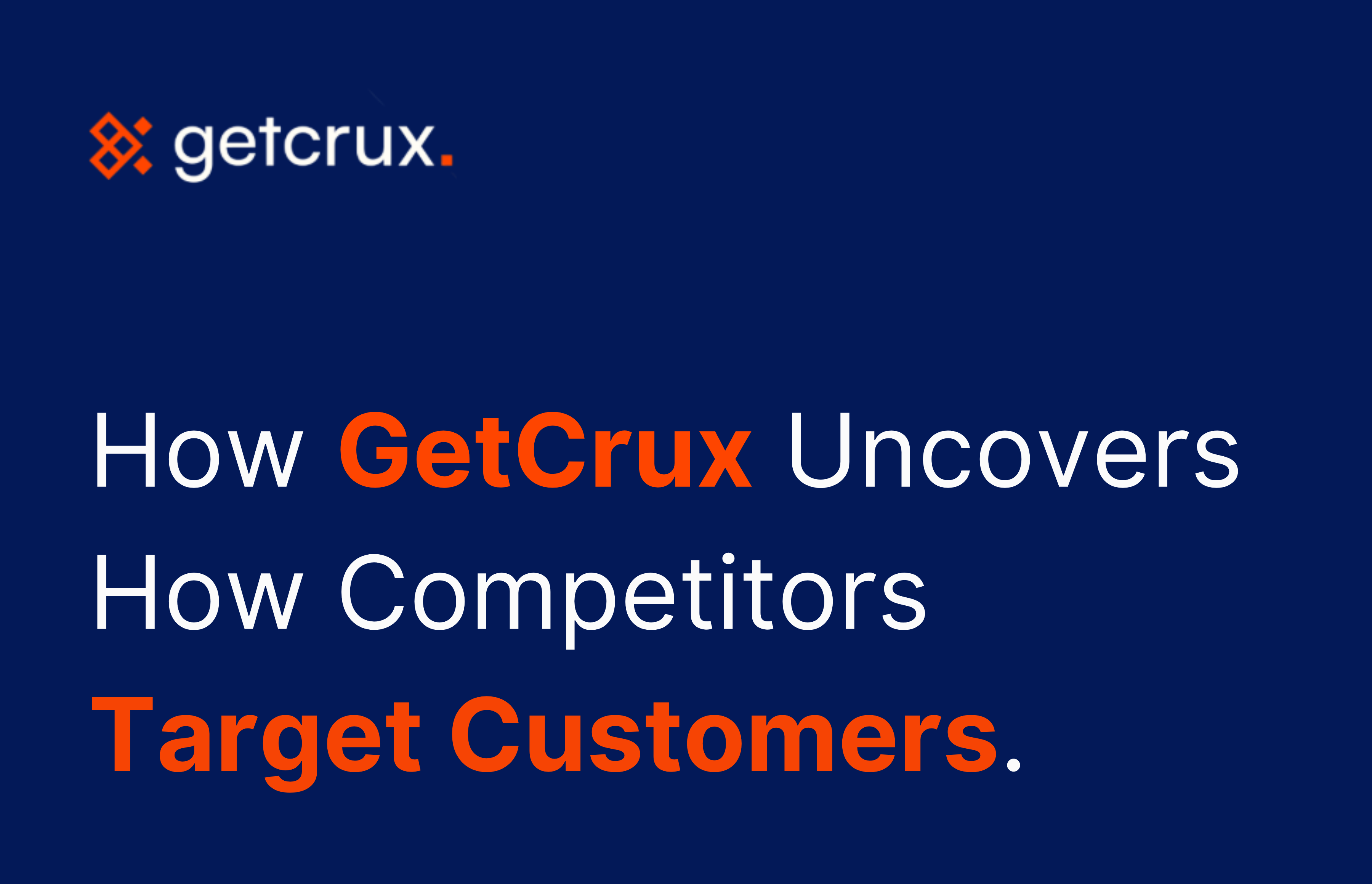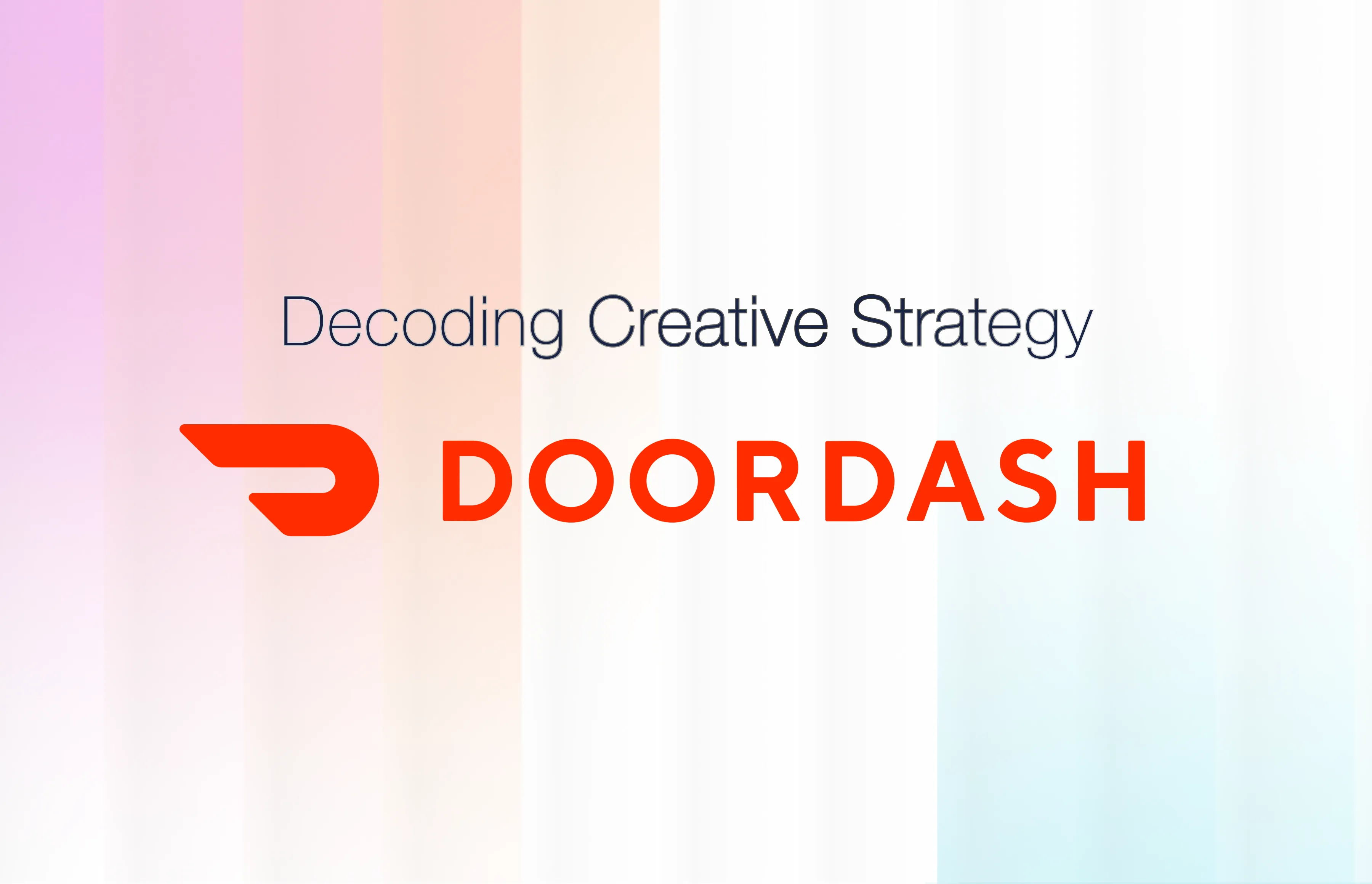Understanding how competitors reach their audience is one of the most reliable shortcuts to improving your own paid performance. The strongest tools in this space don’t just show you ads: they help you retrace how those ads were planned, placed, and iterated.
That means giving you broad channel visibility, pulling from official data sources when allowed, identifying who the ads are meant for, and revealing the broader strategy behind them.
1. Broad Visibility Across Advertising Channels
Competitive targeting analysis begins with a panoramic view of where brands actually advertise. The most effective tools consolidate activity across social, search, video, marketplace, and display ecosystems, enabling a higher-level read on reach, format choices, and platform emphasis.
Where GetCrux fits:
GetCrux aggregates competitor creatives across major social platforms into one organized workspace. The result is a channel-spanning view of every active ad, grouped by themes and formats, making platform-level strategies easy to interpret.
2. Reliance on Verified Public Ad Libraries
Quality tools source creative data from official public repositories whenever possible. These libraries offer consistent structure, compliant access, and a reliable snapshot of real campaigns.
Where GetCrux fits:
GetCrux syncs directly with the official ad libraries that platforms expose publicly. This avoids unreliable scraping and ensures that competitive datasets remain accurate and trustworthy.
3. Interpreting Targeting Logic Through Observable Signals
Even though private targeting parameters aren’t visible, strong platforms infer strategic direction from visual cues, message design, contextual elements, and placement hints. The aim is to illuminate intent, not guess private data.
Where GetCrux fits:
GetCrux’s AI examines every competitor creative frame-by-frame, identifying demographics, narrative style, tone, hooks, background types, and presentation choices. These attributes are clustered into messaging themes that reflect who the ad was designed to resonate with.
Teams gain clarity on:
- recurring demographic indicators
- repeated hooks and angles
- visual patterns mapped to specific audience mindsets
This makes competitor intent far easier to interpret.
4. Understanding Strategy Over Time
Tools with historical context reveal campaign cadence, message rotation, seasonality, and creative evolution. This time-based view is essential for spotting long-term patterns rather than isolated events.
Where GetCrux fits:
GetCrux highlights how long competitor ads remain active, how often new concepts appear, and whether certain themes return each season. Trends in creative refresh rates and testing velocity emerge clearly, enabling more accurate strategic reads.
5. Estimating Competitor Investment Patterns
Precise budgets aren’t exposed, but creative quantity, testing frequency, and message distribution provide strong directional signals about where a competitor is investing attention.
Where GetCrux fits:
GetCrux analyzes creative density, launch volume, and thematic spread to reveal which narratives competitors emphasize. These signals function as practical proxies for investment intensity and strategic focus.
6. Deep Creative Structure Analysis
High-performing competitive tools decode why certain ads seem to work by analyzing structural elements such as pacing, tone, visual layout, CTA style, emotional triggers, and concept construction.
Where GetCrux fits:
GetCrux excels in this area. The platform labels every creative element - hooks, scenes, demographic traits, emotion type, setting, message structure - and then links those patterns to the presence of winning behavior.
Insights become far more actionable when the structural logic behind successful competitor ads is explicit.
7. Audience Sentiment & Behavior Signals
Engagement patterns and comment sentiment provide clues about how audiences respond to a competitor’s messaging.
Where GetCrux fits:
GetCrux reads comments on competitor ads and extracts the biggest objections, recurring praise points, thematic concerns, and emotional undercurrents. These surfaced signals highlight what resonates and what creates friction.
8. Side-by-Side Competitive Comparison
Effective tools let teams compare multiple brands effortlessly across volume, diversity, message mix, channel emphasis, and testing patterns.
Where GetCrux fits:
GetCrux organizes competitor creatives into structured views that make comparison straightforward.
Teams can evaluate:
- concept diversity
- message coverage
- launch cadence
- creative refresh habits
- thematic gaps between brands
This creates a true competitive benchmark rather than a loose collection of ads.
9. Continuous Monitoring & Update Tracking
Competitor activity changes quickly, and strong tools update data often so trends never lag behind.
Where GetCrux fits:
GetCrux syncs competitor ads automatically, ensuring that new launches or creative pivots appear in real time.
10. Exporting, Sharing & Reporting
Insights matter only if stakeholders can use them. Tools in this category offer exports, share links, and report-friendly formats.
Where GetCrux fits:
GetCrux supports organized creative folders, exports, downloadable assets, and shareable dashboards for collaboration across performance, creative, and leadership teams.
11. Compliance With Public Data Constraints
Ethical tools honor platform rules by only using publicly available creative assets and metadata.
Where GetCrux fits:
GetCrux exclusively ingests data made public by the ad platforms. No private targeting or restricted data is used. Everything remains compliant and transparent.
Why Teams Choose This Approach
A holistic targeting read requires visibility, structure, and interpretability; not just ad discovery. The more cohesive the insight stack, the easier it becomes to form a clear competitive strategy.
GetCrux delivers that by:
- unifying competitor creatives across channels
- analyzing them at a structural, thematic, and stylistic level
- revealing inferred audience focus and message intent
- surfacing patterns competitors rely on the most
- showing long-term testing and cadence behavior
- turning these findings into strategic, concrete direction
The result is a reliable understanding of how competitors approach customer targeting: without guesswork, manual digging, or scattered datasets.





